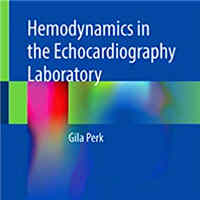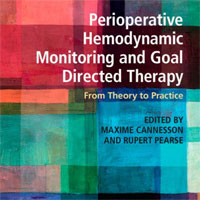Tag: hemodynamics
Increased Sound Levels in the Cardiac ICU Associated with Increased Heart Rate, Blood Pressure, and Sedation
Sound levels in the CICU were consistently higher than recommended. An increase in heart rate, blood pressure and sedation utilization may suggest a stress response to persistent and sudden loud sounds. Given known negative... read more
Personalizing Beta-blockade in Septic Shock
Clinical trials provide only part of the necessary framework for clinical decision-making. In practice, a detailed understanding of each patient’s hemodynamic profile is essential. We believe that the echocardiography-guided... read more
Mitral Valve Transcatheter Edge-to-Edge Repair (MV-TEER) in Patients with Secondary Mitral Regurgitation Improves Hemodynamics, Enhances Renal Function, and Optimizes Quality of Life in Patients with Advanced Renal Insufficiency
Secondary mitral regurgitation (MR) is a common valvular heart disease burdening the prognosis of patients with co-existing chronic heart failure. Transcatheter edge-to-edge mitral valve repair (MV-TEER) is a minimally... read more
Effects of Surgery on Hemodynamics and Postoperative Delirium in Stanford Type A Aortic Dissection
The results of this study indicate that surgical intervention has a significant effect on improving patients’ hemodynamic parameters, with postoperative MAAD and LVEDd reduced compared to preoperative levels, while LVEF... read more
Protocolized Fluid Balance Neutralization During CRRT
Bitker et al. report the GO NEUTRAL randomized clinical trial results, which investigated fluid balance neutralization guided by functional hemodynamic monitoring (FHM) protocol versus a standard of care in critically ill... read more
UFNET Fluid Removal Strategy Secured by Hemodynamic Monitoring vs. Standard of Care in patients with CRRT
An early and active UFNET strategy secured by an advanced hemodynamic protocol using dynamic indices of preload dependence had the capacity to control H72 FB in an ICU population of patients with acute circulatory failure,... read more
Practical Issues in Anesthesia and Intensive Care
The contents of this book are a selection taken from materials that have been developed during the preparation of continuing education courses (distance learning), whose scientific advisor is the volume editor, Professor... read more

Resuscitation Arterial Waveform Quantification and Outcomes in Pediatric Patients
Providing physiologically adequate CPR for pediatric single ventricle patients palliated with Bidirectional Glenn (BDG) or Fontan physiology is challenging. Only 27% of Fontan patients survived to hospital discharge with... read more
Non-invasive vs. Arterial Pressure Monitoring in the Pre-hospital Critical Care Environment
Non-invasive blood pressure measurements are often inaccurate within the pre-hospital critical care setting, particularly in patients with hemodynamic instability which are the group in which the accuracy of vital signs is... read more
Hemodynamics in the Echocardiography Laboratory
The book provides a practically focused review of the latest techniques used for hemodynamic assessment in the echocardiography laboratory. It features a methodical case-based approach covering how to measure hemodynamic... read more

Effect of Different Shock Conditions on Mesenteric Hemodynamics
The velocity parameters of SMA Doppler ultrasound such as TAMV and PSV can reflect cardiac function. The measurements of SMA RI and PI are correlated with lactate levels, having a positive predictive value for hyperlactatemia... read more
Noninvasive Monitoring of Changes in Cerebral Hemodynamics During Prolonged Field Care for Hemorrhagic Shock and Hypoxia-Induced Injuries With Portable Diffuse Optical Sensors
There is a consistency in blood flow measures in both injury mechanisms (hemorrhagic shock and hypoxia), which is significant as the new prototype system provides similar measures and trends for each brain injury type, suggesting... read more
Emergency and Prophylactic ECMO for Patients Undergoing Valve-in-Valve Transcatheter Aortic Valve Implantation with Small Surgical Bioprosthesis
Mechanical circulatory support (MCS) using veno-arterial extracorporeal membrane oxygenation (VA-ECMO) is widely implemented as a rescue device in transcatheter aortic valve implantation (TAVI). Although prophylactic... read more
Vasoconstriction in Septic Shock
Septic shock is associated with endothelial dysfunction leading to arterial and venous dilation, alterations in regional blood flow distribution, and microcirculatory disturbances. Fluids and vasopressors are the key... read more
Cardiac Arrest Following Prone Positioning
The complications that can arise from the prone position are often underestimated. Proceduralists, surgeons, and anesthesiologists need to be thoroughly knowledgeable about the common physiological changes that can occur... read more
Perioperative Hemodynamic Monitoring and Goal Directed Therapy: From Theory to Practice
This unique book provides clinicians and administrators with a comprehensive understanding of perioperative hemodynamic monitoring and goal directed therapy, emphasizing practical guidance for implementation at the bedside.... read more

Remimazolam Effect on Hemodynamics in Patients with Septic Shock
Remimazolam is safe and effective for inducing general anesthesia in patients with septic shock. Low, medium, and high doses of remimazolam can maintain a stable hemodynamic state, and the recovery of hepatic and renal function... read more
Fluid Boluses May Improve CRT
Several studies have validated capillary refill time (CRT) as a marker of tissue hypoperfusion, and recent guidelines recommend CRT monitoring during septic shock resuscitation. Therefore, it is relevant to further explore... read more
Hydroxocobalamin Treatment for Vasoplegia-associated Shock
Vasoplegia is generally defined as prolonged vasodilation due to a pathological decrease in systemic vascular resistance, which causes persistent hypotension even in the setting of normal or increased cardiac output. Vasoplegia... read more
Cardiac Index and Heart Rate as Prognostic Indicators for Mortality in Septic Shock
Our retrospective study shows that monitoring cardiac index and heart rate in patients with septic shock may help predict the organismal response and hemodynamic consequences, as well as the prognosis. Thus, healthcare providers... read more
Critical Hypertension in Trauma Patients Following Prehospital Emergency Anesthesia
Delivery of prehospital emergency anesthesia (PHEA) to seriously injured trauma patients risks hemodynamic fluctuation. In adult trauma patients undergoing PHEA, 11.9% of patients experienced post-PHEA critical hypertension.... read more
Revisiting VA-ECMO in Infarct-related Cardiogenic Shock
Despite advances in medical therapies and coronary revascularization, infarct-related cardiogenic shock remains a life-threatening emergency with high death rates. Temporary mechanical circulatory support, including peripheral... read more









